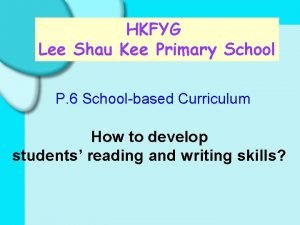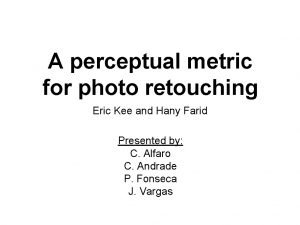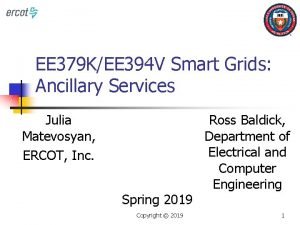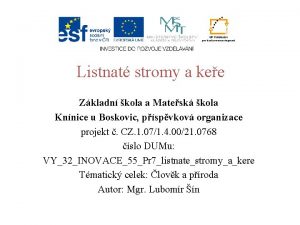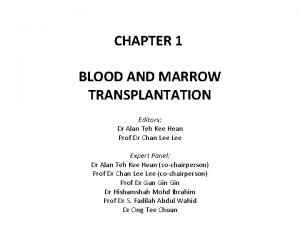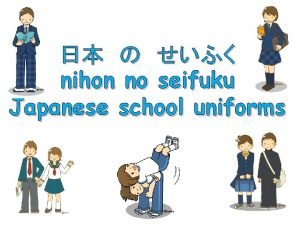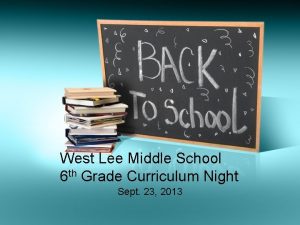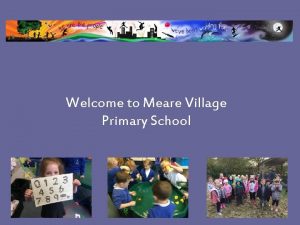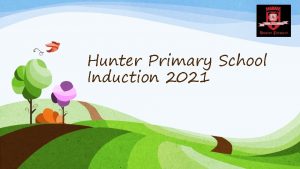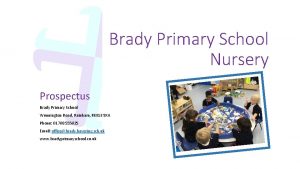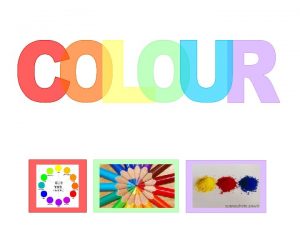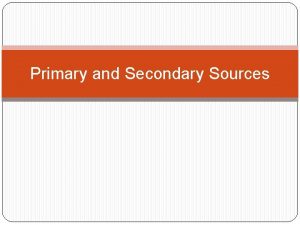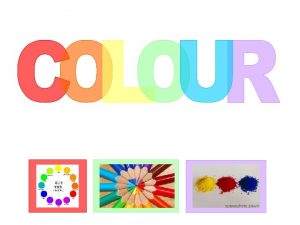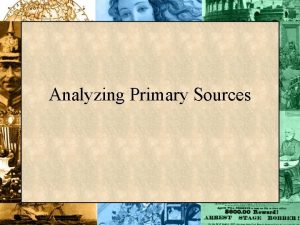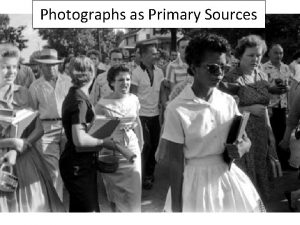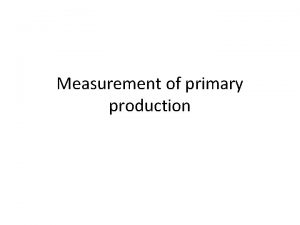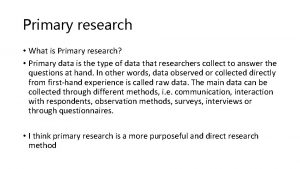HKFYG Lee Shau Kee Primary School P 6



























- Slides: 27

HKFYG Lee Shau Kee Primary School P. 6 School-based Curriculum How to develop students’ reading and writing skills?

Textbook: New Welcome to English Unit 4: Presents Unit 7: Helping the police

Rationale: Similar topics + modular approach Unit 4: Fun Reading (The emperor’s teapot) Unit 7: Helping the police (Crimewatch) Focus: Reading and Writing

Background of the students: -weak in grammar -limited vocabulary -poor reading skills (unable to read independently) -poor writing skills (unable to manage simple sentence structures)

Strategies used: 1. Shared reading in class: a. Show topic b. Show pictures and key words c. Brainstorm with the class d. Make predictions e. Ask open-ended questions f. Divide the whole passage into small pieces (slow the pace of reading) (Shared reading approach was used)

How to put it into practice?

a. Show the topic Maggie’s mistake b. Show pictures and words Where is she going? Tying her shoelace 1. What are they going to do? 2. What is Kiki doing? 3. Will she go and play badminton?

Reading: The Emperor’s teapot Mr Leung What was it? Who were they? • Where were they? • Why was Mr Leung so scared? c. Brainstorming questions(1)

Amy What was it? c. Brainstorming Questions(2) • Who gave Amy the teapot? • Who wrote the note? What was it about? • If you were Amy, what would you do?

d. Allow easy predictions - ask some easy questions after reading a short paragraph - let students guess the development of the story Vs -students will not their textbooks predict once they open

Maggie’s mistake Where is she going? d. Allow easy predictions 1. What are they going to do? 2. What is Kiki doing? 3. Will she go and play badminton?

Amy e. Ask open-ended questions What was it? • Who gave Amy the teapot? • Who wrote the note? What was it about? • If you were Amy, what would you do?

Strategies used: 2. Support reading by picture clues(worksheet): -divide the whole passage into small pieces -Provide picture clues (for comprehension worksheet) Last month some thieves stole a valuable teapot from a museum in Hong Kong. They took the teapot to America but the American police found it. The museum sent Mr Leung to America to collect the teapot. On the plane back to Hong Kong he noticed two men. They were watching him closely. “Perhaps they’re going to steal the teapot again. I must think of a plan, ” he thought.

Strategies used: 3. Design of the worksheets a. Be consistent b. Include various types of questions c. Cover different reading skills d. Extract useful words from the story e. Include sentence making f. Write simple ending for the story g. Write a simple story with picture clues

a. Be consistent Qs in class = Qs in worksheets More practice in class help to answer open-ended Qs in worksheet

b. Include various types of Qs Types of questions: a. Wh- questions b. Yes/ No questions c. Open-ended questions

c. Cover different reading skills Skills: 1. Referencing skills 2. e. g. “I’m going to buy him one. What does “one” mean? 3. 2. Expressing ideas 4. e. g. What do you think of Mary? 5. Do you think Mary is clever? Why?

d. Extract useful words from the story Why? ? ? - prepare for story-writing Examples : a. thought b. whisper c. said d. shouted

e. Include sentence making Why? ? ? - prepare for story-writing Example: Maggie watched Kiki all afternoon. “Kiki looks like a thief. She talks like a thief and she walks like a thief. I’m sure she stole my watch, ” thought Maggie. Guided Writing. 1 a. _______looks like ___________. 1 b. _______talks like ___________.

f. Write simple ending for the story Example (1): After Maggie had found her watch, she felt very sorry. So she decided to write Kiki a letter to say sorry. Complete the letter with the help of the given words. forgive trust sorry wrong make a mistake Dear _________, This morning I found my watch in my school bag. I ___________. I have to say ______. I should ________________. I hope ______________________. Yours faithfully, ____________

Example (2): unfriendly get angry make friends impatient share things Use the following words to write a short story. Mary is ___________________________ Very difficult _________________________________________________________________________ exercise for students! _________________________________________________________________________

g. Write a simple story with picture Strategies used: clues End product!! Supports: a. Provide picture clues b. Provide guided questions c. Brainstorming in class (ideas) d. Vocabulary provided by teacher

Example: Superman Write the story. Use the guided questions to help you. What is the name of Superman? What does he do? Where does he work?

Where was Superman? What did he see? What were thieves going to do?

Where was Superman? What did he do?

What did Superman do? What were thieves going to do? Draw and write the ending of the story.

Thank you!
 Lee shau kee primary school
Lee shau kee primary school Kee 379
Kee 379 Eric kee
Eric kee Kee 394
Kee 394 Kee 394
Kee 394 Kee 394
Kee 394 Sunisa kee
Sunisa kee Listnaté stromy
Listnaté stromy A kee
A kee Elmer t kee
Elmer t kee Professor frank kee
Professor frank kee Corneal ulcer fluorescein stain
Corneal ulcer fluorescein stain Dr alan teh kee hean
Dr alan teh kee hean History of japanese school uniforms
History of japanese school uniforms West lee middle school
West lee middle school Lee burneson middle school
Lee burneson middle school Jaggers nutrition menu
Jaggers nutrition menu Magenta cyan and yellow are the ____ color. *
Magenta cyan and yellow are the ____ color. * Yan oi tong tin ka ping secondary school
Yan oi tong tin ka ping secondary school Yiu tupe
Yiu tupe Vredekloof primary school fees
Vredekloof primary school fees Meare village primary school
Meare village primary school Goosehill primary school
Goosehill primary school Gongshang primary school
Gongshang primary school Manor foundation
Manor foundation Complete the table with mahbubs information
Complete the table with mahbubs information Farzana and jamil are from kustia
Farzana and jamil are from kustia Bree chisholm
Bree chisholm
